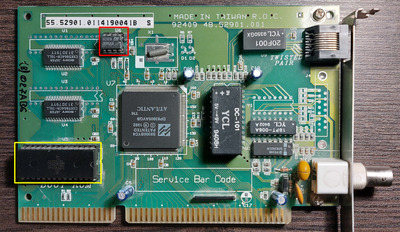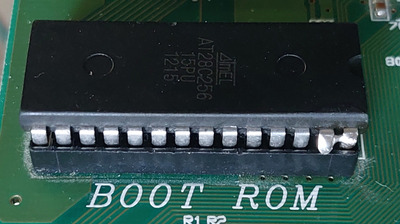I've had some of those EEPROM chips die on network cards. Anything from glitches, to not being able to write anymore, to completly dead chip. Not sure why but various datasheets show a lot of chip revisions - my guess it the design was far from perfect and these do actually age and die on their own.
If you have a programmer you should look for a new/NOS 93C06 and program it with the values of the old one. Even if some data is glitched the config program might be able to re-write and correct it. I'm not sure if you can just swap the EEPROM with an empty one though - on cards I've dealt with (3Com) the ETH MAC is stored in there, along with the card PCB configuration (what ports are present, etc). So empty chip won't work, probably - a programmer is needed.
Eventually I was able to figure out how the checksum is calculated (by changing some config settings and re-reading the chip) so now I can create these for some cards from nothing, with custom MAC. But I'm pretty sure this one will have it implemented differently...
As for the config tool being wrong - I had some issues with the software too. 3com will try to validate the BOOT ROM in order to enable it so make sure to disable shadowing in mobo BIOS for that area. Realtek software would not work on 286 at all, and would glitch or hang on 486DLC type CPUs. Also, make sure to enable software protection on that 28C256 after programming, because some chips will try to toggle the high address lines, and this chip has /WE instead of A14 on pin 27, you might be getting instant corruption of the data once installed in the network card. This too would cause checksum error.

